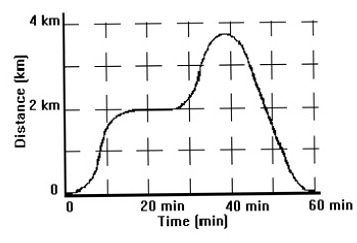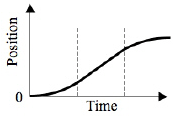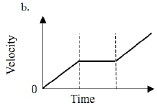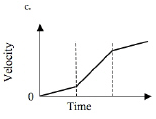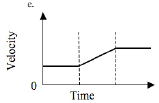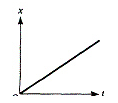
AP Physics 1D Kinematics Review
Assessment
•
Michael Frankenhoff
•
Physics
•
11th Grade
•
364 plays
•
Hard
Improve your activity
Higher order questions
Match
•
Reorder
•
Categorization
.svg)
actions
Add similar questions
Add answer explanations
Translate quiz
Tag questions with standards
More options
14 questions
Show answers
1.
Multiple Choice
An object is moving in a circle with constant speed. Which of the following is/are true?
I. The object has constant velocity
II. The object has nonzero acceleration
III. After one revolution, the magnitude of the displacement is a positive value.
I only
II only
III only
I and II only
II and III only
2.
Multiple Choice
An ideal elastic rubber ball is dropped from a height of about 2 meters, hits the floor and rebounds to its original height.Which of the following graphs would best represent acceleration versus time for the bouncing ball?



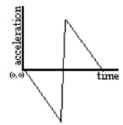
3.
Multiple Choice
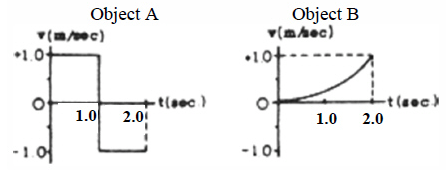
The following three questions relate to two objects that start at x = 0 at t = 0 and move in one dimension independently of one another. Graphs, of the velocity of each object versus time are shown below.
Which object moves with constant non-zero acceleration?
A
B
Both
Neither
4.
Multiple Choice
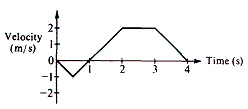
The graph above shows the velocity versus time for an object moving in a straight line. At what time after t = 0 does the object again pass through its initial position?
Between 0 and 1
1 s
Between 1 and 2 s
2s
Between 2 and 3 s
5.
Multiple Choice
Consider a ball thrown up from the surface of the earth into the air at an angle of 30° above the horizontal. Air friction is negligible. Just after the ball is released, its acceleration is:
0 m/s2
Upwards at 9.8 m/s2
Downwards at 9.8 m/s2
Upwards at 4.9 m/s2
None of these
6.
Multiple Choice
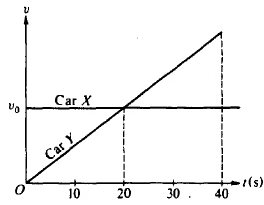
At time t = 0, car X traveling with speed v0 passes car Y which is just starting to move. Both cars then travel on two parallel lanes of the same straight road. The graphs of speed v versus time t for both cars are shown above. Which of the following is true at time t = 20 seconds?
Car X is accelerating faster than car Y.
Car Y is passing car X.
Car Y is in front of car X.
Car Y is behind car X

Explore this activity with a free account
Find a similar activity
Create activity tailored to your needs using
.svg)

Free Fall
•
11th - 12th Grade

Momentum
•
11th - 12th Grade

Projectile Motion
•
11th Grade

Free Fall
•
9th - 12th Grade

Momentum
•
10th Grade

Momentum and Impulse
•
10th - 12th Grade

Momentum Calculations
•
9th - 12th Grade

Impulse&Momentum
•
11th Grade - University
